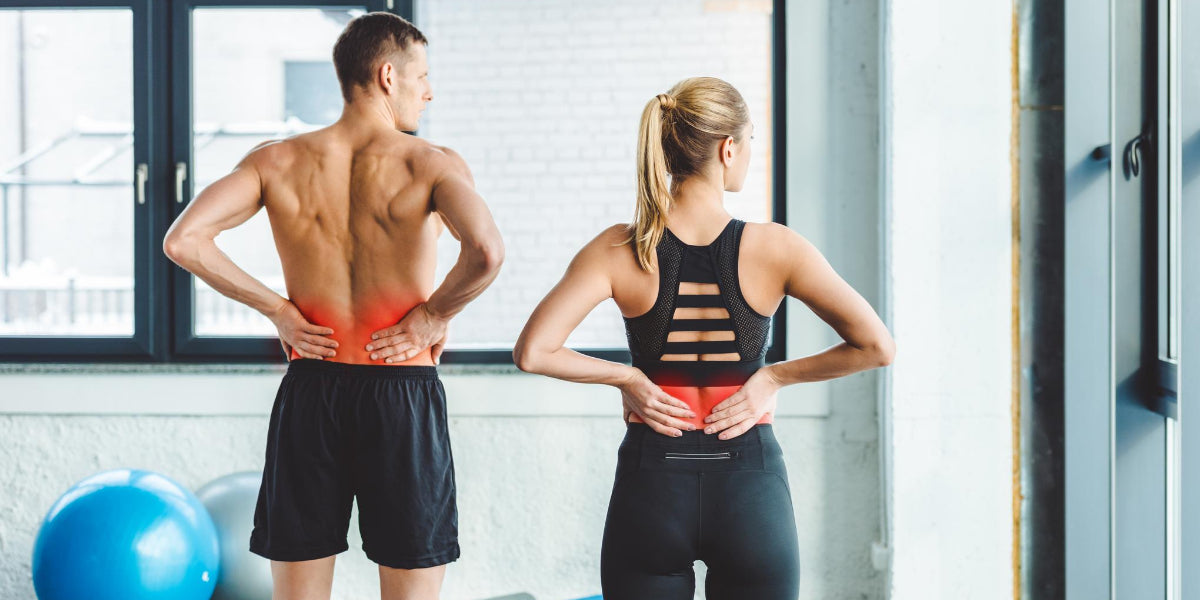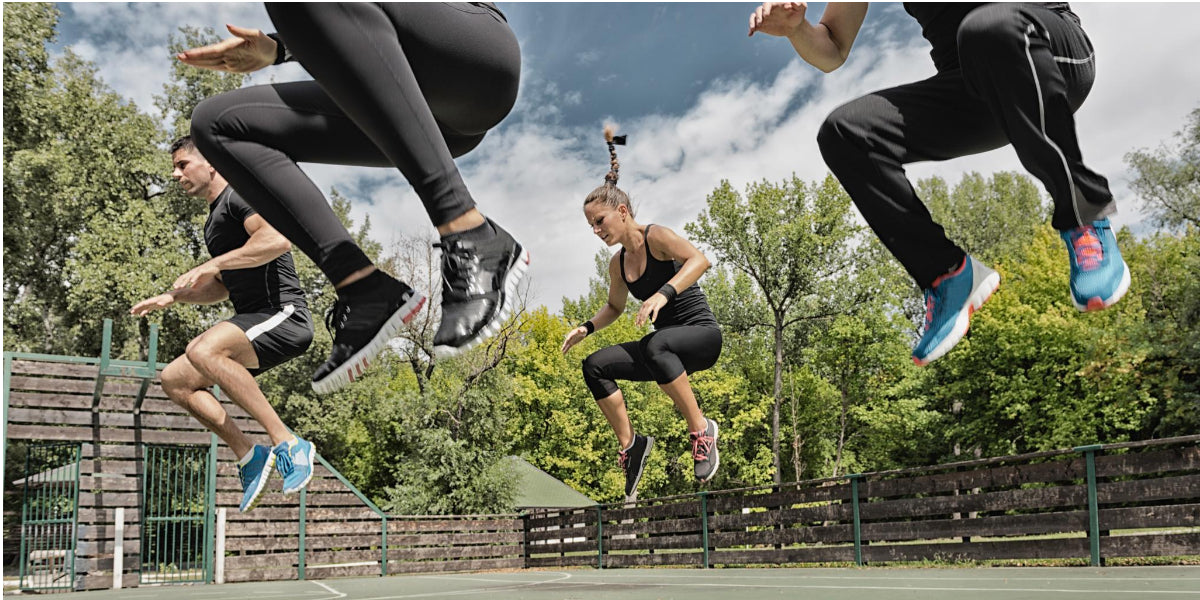In today’s hyper-connected society, slowing down is not an easy task! Distractions overwhelm us all the time. It might be challenging to concentrate and keep a calm mood when our attention is frequently diverted in different directions. Fortunately, as one study has proven, Pilates is one of the most effective methods for relieving physical and psychological stress.
Pilates is a form of exercise that focuses on core strength and flexibility through exercises designed to stretch and strengthen the body. This approach has gained worldwide popularity with people of diverse ages and backgrounds now practising this form of exercise.
Read on to learn about why it’s important to reduce stress, and the 5 effective Pilates methods to help ease your stress.
Letting Go of Emotional Tension With Pilates
Have you ever noticed how stress and tension can take a toll on your health, making you more prone to illness? It's no secret that stress can have negative effects on both our mental and physical well-being. From our digestive system to our mood, stress can be a major factor in the development and triggering of diseases, according to the American Psychological Association.

Pilates can help to counteract the negative effects of stress. Pilates Expert Gary Noble says that Pilates helps you focus on your body, mind, and breath, giving you the space to not only be aware of the present moment but also better handle the worries of life. Not only will you experience physical benefits, such as improved flexibility, core strength, and posture, but it also promotes a sense of relaxation and mental clarity, allowing you to have a positive shift in your overall mood and sense of well-being.
According to research, here are some of the health benefits of Pilates:
- It improves your memory and focus
- It improves your mood and energy
- It enhances your body awareness
- It helps to improve your sleep hygiene

Say Goodbye to Stress with These 5 Pilates Exercise
One of the great things about Pilates is that you can do it anywhere, anytime, with no equipment required. Whether you’re a beginner or an experienced fitness enthusiast, there are plenty of Pilates exercises to choose from that can help release your stress and ease your mind while improving your posture, balance, and overall fitness level.
Lateral Breathing
Exercises in Pilates call for deep breathing–not just when you take a deep breath, but also when you exhale thoroughly, pushing out every last bit of stale air and allowing fresh, energising air to flood in.
Here’s how to do it:
- Put your hands directly beneath each side of your rib cage while sitting easily on the floor.
- Take a deep breath through your nose. Do not force your lungs to fill past their limit; instead, carefully and gently investigate the maximum amount of air that they can now hold. As your chest fills with air, notice your rib cage expands.
- Gently exhale through your mouth till there is no more air in your lungs. Simply let the air gently leave your lungs as you sense your rib cage tighten.
- It can take a few breaths before you start feeling your rib cage open up as you inhale. Afterward, you can easily notice your rib cage expanding and contracting with each breath.
Tips
- You should inhale comfortably and thoroughly without forcing it or overextending your lungs. Make sure to relax your jaw and neck while maintaining a straight spine.
- Shallow chest breathing lowers the amount of oxygen in your blood and speeds up your heart rate, which intensifies any tension or worries you may be experiencing. Take a slow, deliberate breath through your nose to combat this physiological reaction to stress that increases anxiety.
Benefits
- Deep breathing enhances the lymphatic system's function, which is in charge of cleansing your body of toxins.
- It eases stress through your musculoskeletal system, reducing the risk of injuries brought on by exercise.
Spine Rotation
Spine rotation helps to increase spine mobility, flexibility, stability, and core strength. You can practise this exercise in various ways that allow you to develop, challenge yourself, and do what suits you best.

Image from PHYSIOELEMENTS
Here’s how to do it:
- Make a “T” position with your arms while lying on the ground with your knees bent and close together.
- While you move both of your legs to the left and your head to the right, draw your abdominal muscles into your spine. Inhale deeply here and concentrate on filling your rib cage, back, and lower abs with fresh oxygen.
- As you switch to the other side, keep your abdominals tucked into your back and raise your knees to your chest to cushion your lower back. Repeat two or three times.
Tips
- Make sure that your feet remain parallel to one another and that the pelvis remains steady and does not twist at all times.
- Put a small cushion or folded towel beneath your hips if your thighs are stiff and it is challenging for you to sit up straight. If holding your arms out is uncomfortable, fold them over your heart, or lay your hands comfortably on your shoulders.
Benefits
- Spine rotation expands the motion in the upper body. It encourages healthy posture and provides an opportunity to inhale and exhale deeply with movement.
- It helps to strengthen your abdominal muscles as they are responsible for controlling the rotation.
One Leg Circle
One of the best Pilates mat exercises for strengthening your muscular endurance and pelvic stability is the single-leg circle. Even with the circular motion of the leg in the hip socket, the abdominal muscles must exert a lot of effort to maintain control of the entire torso.

(Image from TRANSFORM PILATES)
Here’s how to do it:
- Lie on your back in a supine position. Inhale deeply, then exhale as you lift one leg off the ground, extending the knee upward.
- Start making medium-sized circles with your toes on the ceiling while deep breathing. Keep the opposite leg firm and the hips steady.
- Before switching legs, make five leg circles in one direction, then five in the opposite. Reduce the circle’s range of motion if your control is challenged.
Tips
- When performing your single-leg circles, make sure your shoulders and pelvis remain level. It's more crucial to do this than to fully extend the leg or make large circles. Your abdominal muscles work hard as you maintain a stable pelvis.
- Maintain a bent non-working leg with a flat foot on the ground. Avoid extending the leg up to the ceiling if your hamstrings are tight. The knee should remain slightly bent. Your hips need to stay planted and firm on the mat more than your leg has to be straight. If you do bend your knee, aim to straighten it once in a while to maintain flexibility.
Benefits
- Besides your core, your quads and hamstrings are strengthened with the single-leg circle.
- Like most Pilates exercises, this one encourages balance and better general hip function by engaging important muscle groups on both sides of the body at the same time.
Swan Dive
Swan dive is a full-body exercise that lengthens and stretches the front of the body while strengthening the back. After mastering the swan exercise, you'll start to feel stronger and more prepared to undertake more challenging exercises with a wide range of motion.
Here’s how to do it:
- Lie flat on your stomach and place your arms on either side of your head at 90 degrees. Make sure to extend the neck and engage your core. You can rest your forehead on a towel if needed.
- Take a deep inhale, then exhale as you stretch forward through your upper body and push yourself off the ground. Take a deep breath again, then float back to the starting position.
- Stretch out your neck and lower the shoulder blades keeping your legs relaxed. Repeat 6 to 8 times.
Tips
- Extend your arms as far as is comfortable for you and still keep your hips and knees firmly planted on the ground. Make sure not to push yourself to raise your arms straight.
- Make sure to maintain your forward gaze rather than gazing up if you have a neck ache. If you have any stress in your lower back, reduce the size of the movement.
Benefits
- Swan dive strengthens the core muscles, hip flexors, and quadriceps while opening the front body. Anyone who spends a lot of time sitting down may suffer stiff hip flexors, and Swan will help restore flexibility. Swan is also a counter stretch utilised during a Pilates sequence.
- Swan dive also develops a stronger back, inner thighs, shoulders, pelvic floor, glutes, and hamstrings as the exercise activates these body parts.
Bridge
In any Pilates routine, bridging is a key component. This exercise enhances the body's general functionality, enabling users to move more easily and painlessly throughout their daily lives. Each bridge series' fundamental goal is to restore balance and bodily alignment.

(Image from SONIMA)
Here’s how to do it:
- Come to a back lying position with your legs hip-width apart while your knees are bent. Your arms should be down by your sides, and heels in line with your buttocks.
- Inhale deeply, then flatten your lower back as you exhale so that it looks as though your tailbone is being raised to the ceiling.
- Imagine each vertebra rising off the floor one at a time until your shoulders are holding all of your weight. Make sure you are not pressing your head to the floor since your head should feel relaxed.
- When you're ready to breathe in, lower yourself back to your mat one vertebra at a time, beginning at the top of your back and moving down to the bottom. Walk with your feet slightly closer to your hips if you have hamstring stiffness while performing the workout.
Tips
- Make sure your lower back isn't hanging while you're in your bridge and concentrate on bringing your tailbone to the back of your knees.
- Avoid leaning too much forward onto your neck. Even when your hips are elevated, keep your chest relaxed and your collarbone open. As you progress through your bridging, press evenly into both feet to ensure that both legs are involved.
Benefits
- The bridge exercise is effective at mobilising the spine and strengthening the glutes, hamstrings, back, and abdominal muscles. It works to increase strength and flexibility in these regions, making it a helpful exercise for back, hip, pelvic, and knee problems.
- It promotes relaxation and better body awareness and activates local stabilising muscles.
Takeaway
Ready to commit yourself and your physical and mental health? Pilates is a perfect way! Try out these Pilates exercises, and you'll be amazed by their positive effects.
So, why wait any longer? Take some time for yourself and get started today!
Renpho Health Tips
-

Exercises to Make Your Lower Back Muscles Stronger
January 16, 2023
Read more >
-

Exercises To Strengthen Glutes & Squats
January 23, 2023
Read more >
-

5 Stretching Exercises You Can Do To Power Your Cardio Workout
February 6, 2023
Read more >
-

3 Exercises For Building Upper-Body Strength, According to a Personal Trainer
February 20, 2023
Read more >
-

5 Lower Body Exercises to Add to Your Outdoor Circuit Training
March 20, 2023
Read more >

